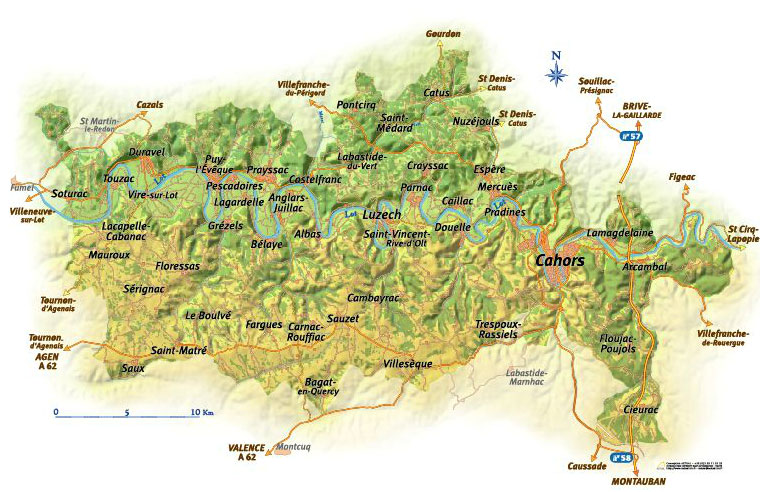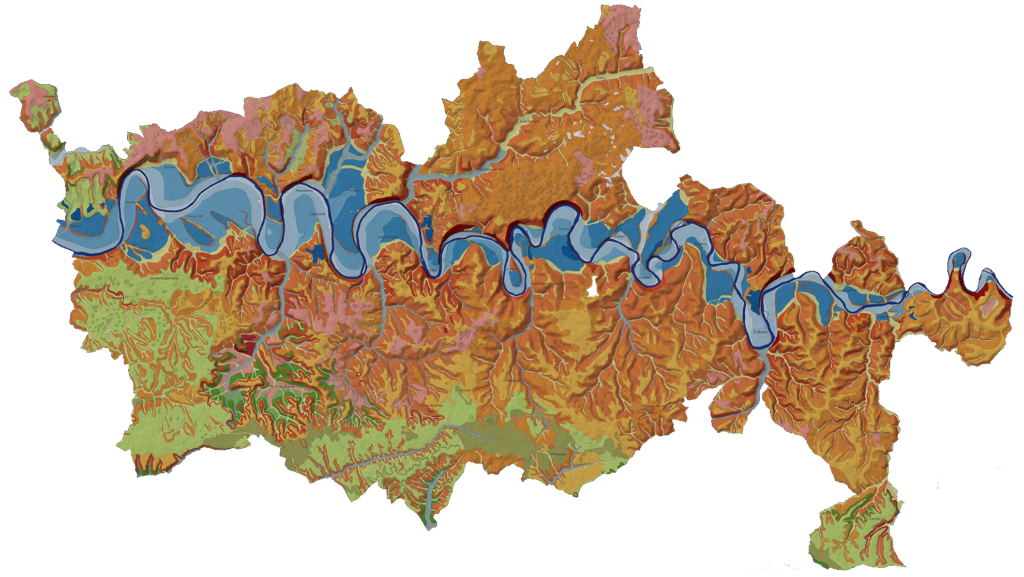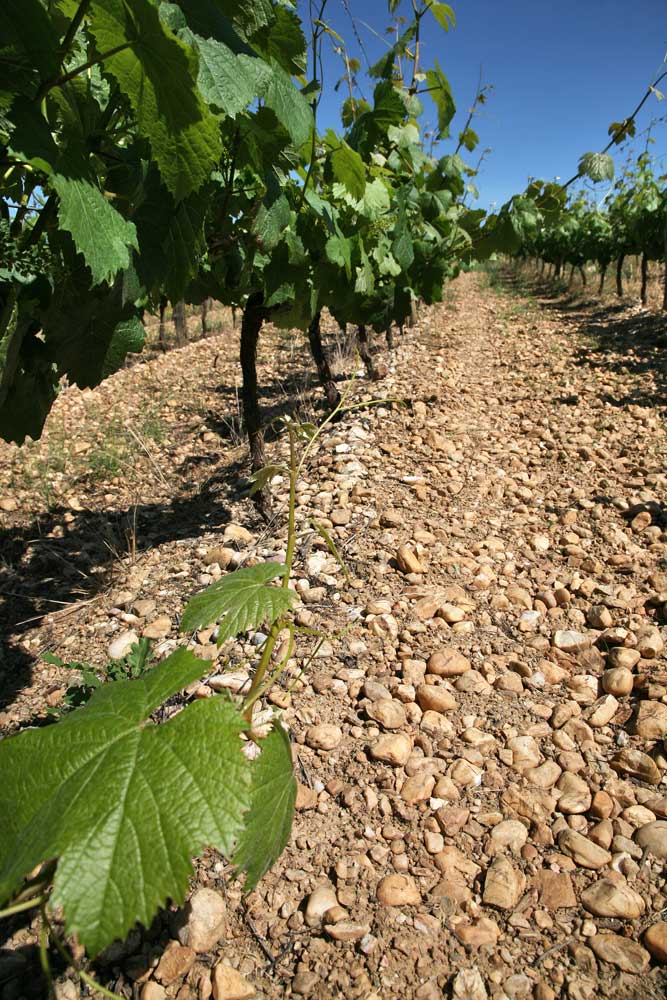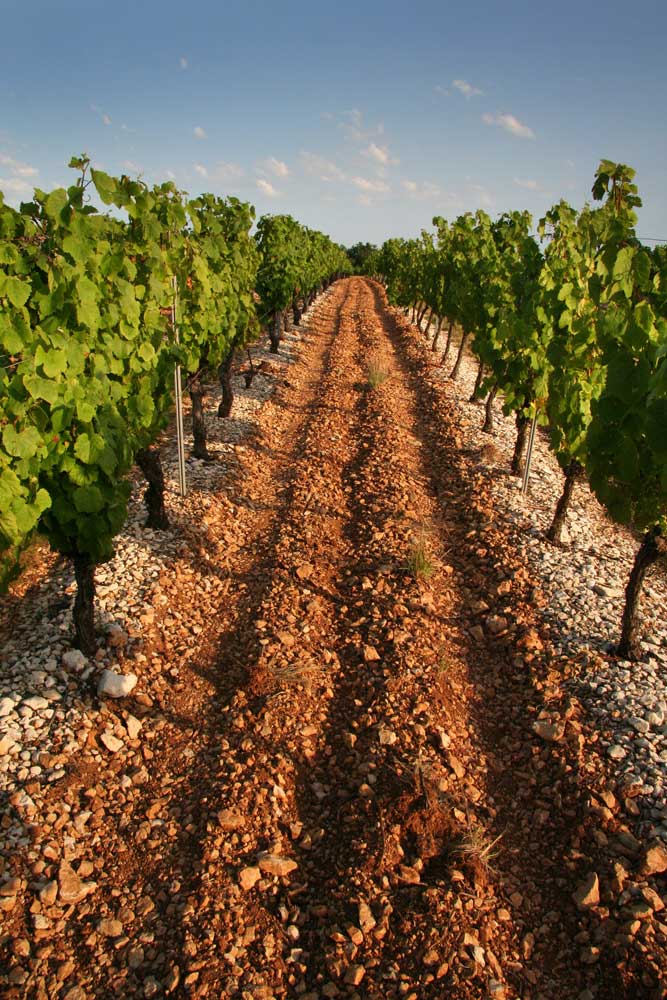In the heart of the Lot valley
Cahors is truly a unique appellation!
The Cahors AOC was created in 1971 and is reserved exclusively for red wines crafted from Malbec grapes. The specifications governing the appellation allow two secondary grape varieties: Tannat and Merlot, but Malbec must represent at least 70% of the blend.
The vineyard differs from its counterparts elsewhere in the south-west of France due to its iconic grape variety. Cahors is the cradle of Malbec. Another specificity of the vineyard is its great diversity of terroirs, making it possible for winegrowers to craft “original” Malbec wines. But beyond that, it is in fact the winemakers of Cahors – the men and women who take pride in the values of south-western France – who make the appellation so unique.

Facts and figures
21.700 hectares
covering
45 communes in the Lot
In 2020, the AOC represented a planted vineyard area of 3,323 hectares, out of a total of 21,700 hectares covering 45 communes in the Lot, for the delimited AOC area.
Three-quarters of the producers are private wineries. The remaining quarter are members of the only cooperative winery in the appellation: the Côtes d’Olt, based in Parnac, which is now part of the Vinovalie Group.
20 millions bottles
On average, up to 20 million bottles can be produced each year, depending on the vintage. Cahors wines are sold mainly in France, but export sales have significantly increased over the last few years, mainly to Canada, the United States, the United Kingdom, China and Belgium.
History
Cahors The Cradle of Malbec
In the 16th century, Cahors Jurist and University Professor François Roaldès published “Le discours sur la vigne”, one of the rare winegrowing works of the time, which refers to the presence of Auxerrois vines in the Cahors vineyard for at least 600 years. In more recent times, genetics has shown that the Auxerrois of yesteryear is in fact the Malbec variety of today.
The term Malbec was first used in the 18th century. It was named after the owner of a wine estate in the Médoc, Mr Malbeck, who disseminated the grape variety and gave it his name.
The church, power and wine: Saint Didier, Bishop of Cahors (580-655)
Saint-Didier, the Bishop of Cahors, was born around 580. He came from a high-ranking and powerful family. We know of his life thanks to sources which are quite exceptional for the time, consisting of correspondence (about thirty letters), part of his will, and an account of his life written by a monk from Saint-Géry in the century following his death in 655. Wine plays an important role in several episodes, each of which bears witness in its own way to the existence of a large commercial vineyard in Quercy, around the episcopal city of Cahors.
Didier de Cahors, like many Merovingian bishops, played a major role in the development of the vineyard for liturgical (mass wine), social (duty of hospitality: wines for receptions, honours) and economic reasons (wines sold on the local market or further afield).
Cahors wines loved by the King of France (16th century)
Francis I was born in Cognac. He ascended the throne of France in 1515, after his cousin Louis XII. Thanks to the royal administration, we know that Francis I enjoyed the wine(s) of Cahors. Sommeliers were sent to Cahors to buy wine. In addition to his established love of the wines, Francis I changed the destiny of the iconic grape variety of Cahors twice.
First, in June 1531, he brought vine shoots from the Cahors vineyard to plant them near his Château in Fontainebleau. The King wanted to create a vineyard of all vineyards, able to produce his own wine while honouring and centralising the variety of wines crafted in his kingdom and abroad. This showcase, like in a shop display, soon led to dissemination of the grape varieties. One of these grape varieties, in particular, was widely distributed. This was the samoreau or samoireau, which is none other than the caux, cor, or cot de Touraine or the auxerrois quercynois, the future Malbec.
The subsequent decision of Francis I to make French the official language of the Kingdom (edicts of Villers-Cotterêts, 1539) led to the invention of the word “auxerrois” to refer to the grape variety. It can therefore be said that it was Francis I who first gave the grape variety its visibility in written documents.
Victory over phylloxera
Initially considered as a disease that was not too serious or that would only affect a few, phylloxera struck and destroyed almost all French vineyards.
In France, phylloxera was first detected in the Gard region in 1863. It arrived in Europe following the introduction of American vine shoots imported for study. While the vine diseases known until then only temporarily reduced the harvest, vines affected by phylloxera died within three years.
The disease first appeared in the Cahors vineyards in 1876, probably pushed by westerly winds from the Bordeaux region where it appeared in 1869. It had unprecedented impact. The region was particularly hard-hit given that it had almost entirely converted to winegrowing over the previous three decades. As there was no cure, vines had to be replaced. As the disease progressed, every remedy attempted failed. So there was no choice but to uproot and replant. Yet another failure. In fact, identical replanting gave rise to rapid death of the young vine shoots. The only thing winegrowers could do was to abandon the existing vines.
Grafting turned out to be the miracle solution. On a phylloxera-proof American vine plant, a vitis vinifera variety was grafted. The bunches on the graft produced a wine with quality comparable to that of European “ungrafted” vines.
Cahors is one of the regions who succeeded in preserving – one might say “only just” – the continuity that led to the revival of Malbec.
Recognition of quality
1951: Access to the label and status of Superior Quality Wine (VDQS)
Led by the Union then headed by Abel Baudel and by the cooperative cellar, a recent arrival on the scene, Cahors wine received its first quality label, the VDQS label, in 1951. Access to the VDQS label was the key to success, or more prosaically a prerequisite for survival of traditional winemaking certainly very aware of its past achievements, but also very fragile.
The idea of the creators of the VDQS label was that VDQS-labelled wines should soon become AOC wines, so the achievement was merely considered as a step towards the real goal. To emphasise the somewhat “intermediate” status of VDQS wines, in the waiting room, as it were, before AOC status, historian Gilbert Garrier coined this expressive phrase: “Probationary purgatory precedes paradise”.
In Cahors, the phase lasted two decades, which allowed progressive learning of a collective approach to quality. Two modifications substantially changed production conditions during this time: one in 1958 amended the maximum yield to 45 hl/ha, the other in 1966 changed the grape varieties (withdrawal of white grape varieties, dame noire, valdiguié and Lot gamay, introduction of merlot, abouriou, tannat and syrah in the 30% of the blend alongside auxerrois).
1971: Appellation d’Origine Contrôlée (AOC) status granted
The new president of the Union, Roger Baudel, took office after his father Abel Baudel following his election in 1967. His sole objective was to ensure the collective progress of Cahors wines. The aim was clear: to rise from the status of VDQS to the more prestigious status of AOC. The board of directors and the general assembly supported the president. On 17 January 1970, the application was officially submitted to the regional committee of the INAO (national institute of appellations) for south-western France.
The investigating committee began its work in Cahors, alternating field visits and meetings. In September 1970, it gave a very favourable opinion, insisting on the specific identity of Malbec: “Malbec (or Auxerrois or Cot), in itself, is what gives Cahors wine its originality. The Cahors vineyard is the only vineyard in the world using Malbec as its main grape variety. Everywhere else in the world, the variety is used only as a complementary variety. Here, it has found its ideal terroir”.
The classification decree was published on the 15th of April 1971, allowing Cahors to join the elite of French wine.
Geography
Geography & Climat
The Cahors vineyard enjoys a combination of climatic influences very conducive to winegrowing. As the crow flies, the vineyard is the same distance from the Atlantic Ocean, the Mediterranean Sea and the Pyrenees mountains. The temperate oceanic influence is still present with well-distributed rainfall and plenty of sunshine to ensure optimal ripening of the grapes. The favourable geographical location avoids both Atlantic humidity and Mediterranean autumn rainfall. The vineyard benefits from a sunny autumn season which allows winemakers to fine-tune ideal ripeness conditions for harvest without excessive rain.
The influence of the Massif Central mountain range also gives Quercy a mountain climate. This healthy climate for vines in winter brings mild conditions most of the time, although exceptional cold is possible.
Environment
Environmental commitment
The Cahors vineyard is unquestionably an example of successful integration of the vine into its natural environment. Cahors grapes ripen peacefully in the sun, amid wooded hills, meadows and shrubs. Unlike the single-crop vineyards that are still found in some intensive production areas, pride of place is given to biodiversity in the Lot winegrowing landscape.
With three quarters of our winemakers committed to an environmental approach, including 31% of the winemakers with an organic farming label or involved in a conversion process, the Cahors appellation has collectively turned to reasoned, qualitative and sustainable production.
Terroirs
Geological Terroirs

The Cahors vineyard is planted on two main types of terroir: a limestone plateau, the Causses, through which the Lot valley runs from east to west.
The wealth of terroirs we have here is a very unusual occurrence in vineyards and undeniably contributes to the specificity of the Cahors appellation. With the same Malbec grape variety, we can obtain different wine profiles depending on the terroir of origin of the vines. This means that Cahors wines will always surprise you!

The Lot valley:
alluvial terroirs
This is a wide alluvial valley, with terraces and numerous meanders that the Lot river constantly shaped during the Quaternary period. These terraces consist of limestone sub-soils enriched with more or less ancient alluvial deposits left by the river and its tributaries.
The soils are relatively deep, loamy and sandy on the banks of the Lot and clayey and stony at the foot of the limestone slopes.
From the Lot river to the slopes, there is a flood plain on which there are no vines, a first terrace: a Würm terrace with recent alluvial deposits from the Lot river (-20,000 years), a second terrace: a Riss terrace with old alluvial deposits from the Lot river (-200,000 years), and a third terrace: a Mindel terrace with very old alluvial deposits from the Lot river (-500,000 years).
In addition to these three terraces, there are very localised Quaternary resurgences with very old alluvium from the Lot river (dating back more than a million years); and grezes which are cones of limestone scree at the foot of the slopes.
This family of 5 terroirs is home to about 60% of the AOC Cahors vineyards.
The Causses:
limestone terroirs
More than 250 metres above sea level, we have the secondary and tertiary limestone slopes and plateaus, made up of clay-covered stone, more or less mixed with marl.
The limestone slopes and plateaus of the Jurassic period (150 million years ago) and the marly-limestone lake plateau of the Oligocene-Miocene period (30 to 5 million years ago) can be distinguished. In the first case, the soils are clayey-limestone, not very thick and stony. The cracking of bedrock allows the vine to push its roots deeper into the soil. In the second case, the soils are clayey, more or less deep, greyish-white, derived from calcareous marl. In addition to these plateaus, there is also, very locally, a red plateau known as the Siderolithic plateau, composed of ferruginous alteration from the Eocene period (45 million years ago).
This family of 4 terroirs is home to about 40% of the vineyard.




